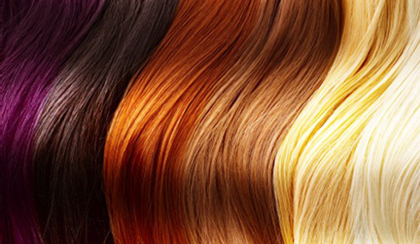8 Solutions To The Most Common Haircolor Issues
No matter how you slice, weave, foil or paint it, the technical side of haircoloring baffles the industry’s most brilliant at times. When those moments strike, it helps to know that others have been hit by those same, “What went wrong?” situations. Here are eight solutions to the most common haircoloring dilemmas:
1. How do I lift dark hair without getting brassy results?
- Add low-volume peroxide (10- to 20-volume) to your formulas.
- Choose a color that is two or three shades lighter than the desired level and has an ash or natural ash base.
- Consider adding a small amount of blue or green additive to further cut warmth and brassiness.
2. Semi, demi or permanent color—how do I know?
The basic difference between them is the level of penetration into the hair shaft says Berry Bachen of MAINENTRANCE Artists in New York (and a NAHA Haircolorist of the Year finalist).
- Semi-permanent color: sits in the cuticle, is not mixed with an activator, ammonia-free formula, lasts four to six shampoos and is excellent for shine and trying out a new tone.
- Demi-permanent color: sits in and under the cuticle, is mixed with an activator, ammonia-free formula, lasts 18 to 20 shampoos and is ideal for toning or going darker.
- Permanent color: sits under the cuticle and inside the vortex, is mixed with activator, removes natural pigment and is essential when going lighter, covering gray or intensifying tone.
3. To tone or not to tone?
- First, determine if you want to remove or intensify a tone.
- When neutralizing a warm or brassy tone, remember green neutralizes red, blue neutralizes orange and violet neutralizes yellow.
- When intensifying a tone, don’t lift the hair too much. Your underlying tone should support your target shade.
4. How do I prevent my low-lights from looking drab?
When low-lighting over-processed, lightened hair, the end result can appear muddy because the natural pigment has been stripped. You can combat this by replenishing her strands with a warmer-based lowlight. How?
- Go with either a blonde beige or golden beige shade.
- Choose a conditioning low-lights formula that will fill the hair with moisture while allowing the color to penetrate evenly.
5. So many brands, so little space! How do I select a new haircolor line?
It can be overwhelming, but Berry says four key points will make the decision crystal clear—inspiration, education, technology and inventory. Here are some things to keep in mind:
- How do you feel when you look at the swatches? Does it motivate you to be creative?
- Does the company offer in-salon classes, innovative ideas, new techniques, color-and-style courses, online support, troubleshooting hotlines and other programs?
- Learn about the technology behind the line and how it’ll benefit you, your staff and your clients.
- Consider the inventory that works best in your salon. Do you need a large, extensive line or a complete, compact, intermixable line?
6. How do I know if hard water is affecting my color results?
If color appears flat throughout the top of the head or if foam appears on the top and crown sections when processing is complete, Jet Rhys, owner of Jet Rhys Salon in San Diego, says hard water is the culprit. Here’s what to do.
- Ask your client if she has green or rust color around the drains in her bathtub. If yes, her water contains copper, rust or sodium, which can affect her color.
- Remind clients that when they shower, it is important to wet their hair only when shampooing and conditioning, and they should not let the water run through their hair excessively.
- Let her know installing a water-softening unit in the home can lessen the effects of hard water.
- Recommend Malibu Hard Water Wellness Kit from Malibu Wellness for drawing out mineral deposits and to prevent future build-up.
7. How do I avoid overprocessing my color?
- Do not pull the color through to the ends or overlap it with existing color because that can cause over-processing and damage.
- Instead, apply permanent color on the new growth area only, and use a demi- or semi-permanent glossing formula on the ends.
8. How do I maximize my gray coverage?
- Berry suggests working with a darker permanent shade and leaving the product on for 5 to 10 minutes longer than the prescribed development time.
- Be generous with your product application and work with a color line that offers neutral shades that are perfectly balanced between warm and cool.
- If you’re still having problems, you may need to pre-soften the gray hair. Apply 20-volume peroxide sparingly to the new growth area and dry it into the hair with a cool setting. Then, apply the gray coverage formula to the new growth and process for the full development time.
- Or, you could choose to pre-pigment says Berry. First, apply tint without activator sparingly to the new growth. Then apply your gray coverage formula, with activator, on top and process for the full development time.








